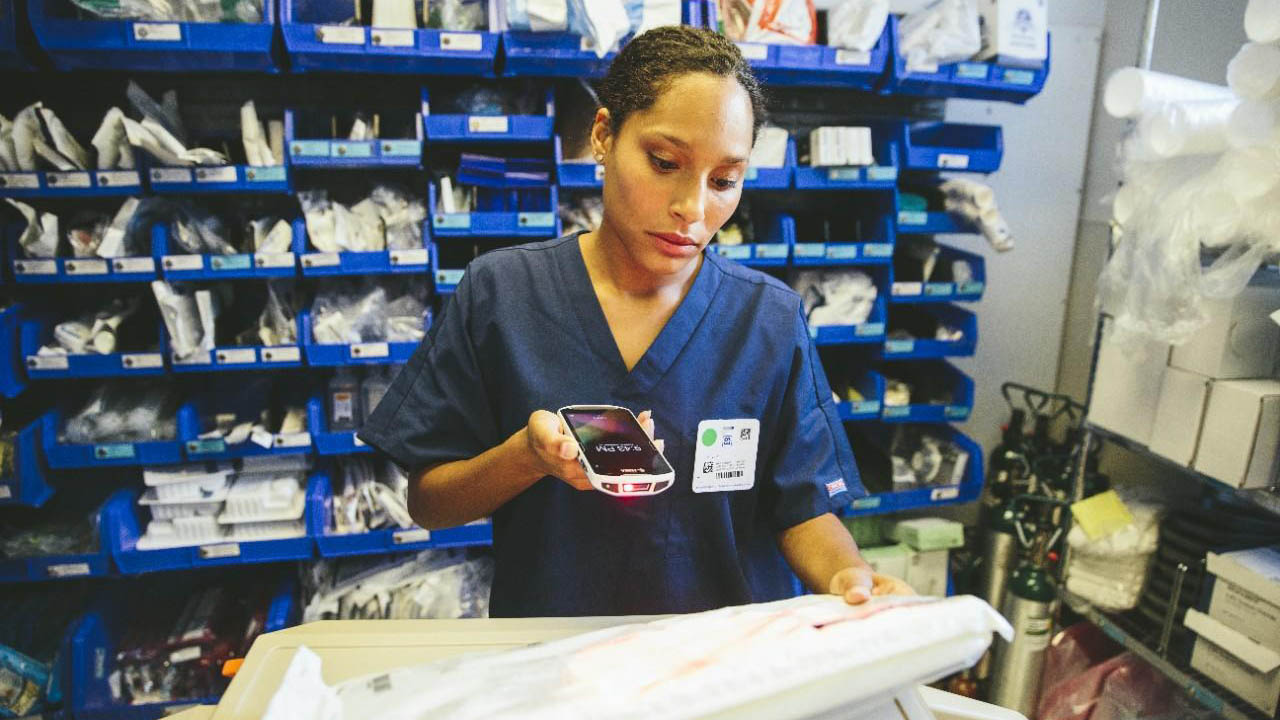
COVID-19 is Not the Only Thing Putting Healthcare’s Supply Chain to the Test. Here’s What Needs to Change.
As often seen in recent reports, the COVID-19 outbreak plunged healthcare systems and their supply chain partners into crisis in a matter of days as hospitals, clinics and even non-acute facilities scrambled to secure the personal protective equipment (PPE) and basic supplies needed to provide standard care services. The “empty shelves” that consumers were experiencing in grocery and retail stores were extending into healthcare, with things such as surgical masks and hand sanitizers quickly going out of stock and becoming unavailable for weeks.
As a result, many primary, specialty and other ambulatory care providers reduced service levels. They did not feel comfortable offering in-person services until they had the supplies needed to minimize the risk of viral transmission between care team members and patients.
Hospitals, however, did not have such a choice. They were the only point of care for many patients, particularly those requiring critical life-saving treatments. So, hospital administrators did what they could to preserve limited PPE, sanitizers, and medical supplies inventory: they postponed non-critical elective procedures and testing, denied access to visitors and asked staff to minimize face-to-face patient contacts.
Even with these drastic measures, the supplies ran out. Life-saving equipment also became scarce as COVID-19 cases surged, and the lack of beds in ambulatory and emergency (A&E), intensive care units (ICU) and isolation wards forced many hospitals to turn patients away that would have been admitted under “normal” circumstances.
While this was not the first time that healthcare’s global supply chain had been strained, it was the most consequential.
As I discussed in depth in my last blog post, disruptive events happen all the time, and each one taxes the healthcare supply chain in its own, often unpredictable, way. And though healthcare leaders have spent years exploring ways in which they can better anticipate demand, we will never be able to fully foresee the impact of each natural disaster or pandemic on healthcare systems or predict routine emergency caseloads.
Fortunately, a combination of event data, technology and time is helping us better understand what could be demanded of healthcare supply chains if another large-scale crisis such as COVID-19, a category five typhoon or months-long bushfires occur in the future. As a result, we can take measured steps to strengthen and subsequently protect healthcare supply chains on both a local and global scale in a way that was not possible in the past.
Five Actions That the Healthcare Community Can and Should Take Right Now in Coordination with Their Supply Chain Partners to Better Prepare for the Next Emergency (and Improve Everyday Operational Readiness)
I realize that hospitals cannot dictate manufacturers’ production capacity or expect transportation companies to suddenly increase their delivery throughput. However, healthcare administrators can take the following steps to ensure that critical supplies and equipment can be acquired at a fair and reasonable price and within a fair and reasonable time, especially in surge situations.
1. Diversify the supplier base to expand sourcing options.
You know the saying, “don’t put all your eggs in one basket”? That is especially true when it comes to healthcare sourcing strategies. Where possible, the best way to ensure that medical supplies, equipment and pharmaceuticals are readily available is to have a database filled with suppliers that you can call as a secondary source when your primary suppliers are unable to fulfill orders on time or at the desired quantity.
Develop a good mix of both on-shore and off-shore suppliers on standby. Though COVID-19 affected the global supply chain, most disruptive events are more localized. Building relationships with manufacturers, distributors and resellers around the world gives you alternative fulfillment sources and helps to maintain continuity in your operations even if some of your supply chain partners’ operations are disrupted due to a natural disaster, labor strike, material shortage or similar event.
2. Implement price protections.
It is expected that the cost of goods and services will increase as demand increases, particularly when supply is limited. However, there is a difference between such justified price fluctuations and price gouging. Unfortunately, healthcare systems experienced some of the latter during the early days of the COVID-19 outbreak, with the public sector often bidding against the private sector to secure critical supplies and equipment in a lose-lose scenario. This could have been mitigated by negotiating contingency contract terms, including cost premiums for supplemental production or expedited delivery, with supply chain partners as noted in the first step above.
3. Upgrade and/or add technology systems that allow you to track and trace inventory, increase accountability and maintain regulatory compliance throughout your entire supply chain.
There are several reasons why technologies such as sensors, blockchain and real-time location systems (RTLS) that use radio frequency ID (RFID) or Bluetooth® Low Energy to provide real-time track and trace capabilities are becoming so valuable to healthcare – and becoming urgent investments.
At the most fundamental level, you need to know exactly where supplies and equipment are located at all times, both before and after you receive them. Neither manufacturers nor distributors have the time or resources to field calls or emails inquiring about order status – and care teams should not have to spend their time chasing down items that were due to arrive two days ago. Track and trace technologies offer complete visibility into the movement of both raw materials and finished goods from one end of the supply chain to the other and help maintain an accurate record of every transaction as the items move from the production line to the hospital’s receiving dock and beyond. This helps to instill confidence in suppliers’ fulfillment capabilities and immediately identify delays that might require hospitals to adjust their operations temporarily in anticipation of inventory shortages.
More importantly, track and trace technologies provide transparency and accountability related to the safe handling of medications, medical devices and even basic supplies such as hand sanitizer and PPE. For example, temperature-sensing labels affixed to vaccines, blood bags and pharmaceutical products can help healthcare providers confirm that they were properly transported and stored as they made their way from the production facility to the care facility. And it is easier to prevent product tampering and theft of high-demand supplies, high-value medical devices or controlled drugs when barcode and RFID labels, mobile computers, scanners and RTLS are used to keep tabs on products at all times.
The good news is that many hospitals, manufacturers and suppliers may already be employing these technologies to help mitigate fraud and ensure compliance with quality and safety-centric legislation such as the European Union’s Falsified Medicine Directive (FMD), Medical Device Regulation (MDR) and In-Vitro Device Regulation (IVDR) as well as the global Unique Device Identifier (UDI) regulation. You can read more about the specifics of these regulations in the following blog posts, as well as the specific ways in which handheld mobile computers, tablets, scanners and printers aid with control and compliance measures:
(This UDI guide is also a fantastic resource for manufacturers and others who will be involved in the production and labeling of medical devices sold and implanted in the U.S.)
Just remember that product quality and efficacy are the keys to provider and patient safety. That is why every healthcare system should be asking about the technology investments made by their supply chain partners to improve inventory track and trace capabilities.
4. Automate inventory utilization monitoring
Replacing the nurses’ toolbelt with clinical smartphones and installing barcode scanners in every patient room and inventory stock room helps care team members quickly report the use of supplies and equipment. They can simply scan the packaging barcode when they take the last mask out of a box or pull a medical device from the stockroom in preparation for surgery to report usage. And pharmacy staff can better track inventory throughput when prescriptions are filled, or drugs are administered to patients by simply scanning the bottle or bag prior to release.
Even manufacturers, distributors and resellers can use mobile computers and barcode scanners in a similar fashion to monitor the receipt, picking, packing and shipment of inventory. Knowing current on-hand inventory levels helps to minimize oversells and fulfillment delays that can impact healthcare capacity, particularly in times of crisis.
5. Incorporate more actionable data into inventory planning and sourcing processes
By using mobile computers, scanners, RTLS systems and other track and trace solutions to improve utilization oversight, you are in a position to make demand planning, sourcing or production decisions using an aggregate set of accurate, real-time data. You will be able to better gauge actual usage levels to minimize waste due to expired overstocks and avoid situations that could lead to shortages. And you could potentially set up systems to prompt an automatic re-order of certain items to minimize the number of rush orders that must be placed.
Of course, track and trace technology systems can also sync with more advanced analytics platforms to monitor overall supply chain performance. For example, they can help you gauge average fulfillment speed, identify repetitive order quality issues and confirm manufacturer and supplier compliance with the FMD, MDR, IVDR, UDI and similar regulations. If issues are identified, the records established using blockchain traceability or barcode intelligence tools will help you identify the actions needed to achieve proper resolution. The actionable insights garnered by track and trace technologies, along with other inventory management systems, can also help healthcare providers and their supply chain partners better manage disruptions and surge events – and activate contingency plans – in a highly collaborative, coordinated and effective manner.
Remember: there is a strong clinical dependency on supply chain performance. A resilient and agile healthcare supply chain enables you to provide life-changing and life-saving care to patients every day. We must take better care of it. Implementing the preventative measures that I outlined above will help give your supply chain and your facilities the fundamental strength, stamina and agility needed to better manage patient surges in the future, regardless of the cause.
Want to discuss the ways in which technology can help improve your supply chain’s track and trace capabilities or the demand planning and sourcing capabilities of your healthcare system? Feel free to reach out to me and my team here.
###

James Woo
James Woo is currently the APAC Healthcare Practice Lead for Zebra, responsible for developing the regional healthcare strategy and support ecosystem to increase adoption of Zebra healthcare solutions in APAC. He is also acting as the voice of healthcare customers.
James has more than 12 years of experience within the healthcare Industry as a Group CIO of a private entity with both hospital and hotel businesses in Singapore. He delivered a secure best-in-class IT ecosystem from the ground-up to digitalize Singapore’s first fully digital hospital, inclusive of operations-critical systems such as an integrated 20+ modules health information system and enterprise resource planning. It also supported essential services such as building management systems, security access, CCTV, telephony and more.
Previously, he worked at Singapore’s first two largest telcos in various capacities. At Singtel, he was VP of Group Cyber Resilience, responsible for driving cybersecurity initiatives and practices for a secure and safer operating environment across the group, spanning multiple countries. He was also CIO of Starub, during which time he integrated and transformed its IT ecosystem to support an integrated customer experience in a triple-play business providing entertainment, internet and telecommunications services.
James holds a Degree in Mathematics from Concordia College.
He contributes back to society through various initiatives, including roles on IT Committees of two social services organizations, RenCi Hospital and AWWA, where collectively they serve the needs of those with early childhood to teen learning disabilities, early dementia and aging related issues.




